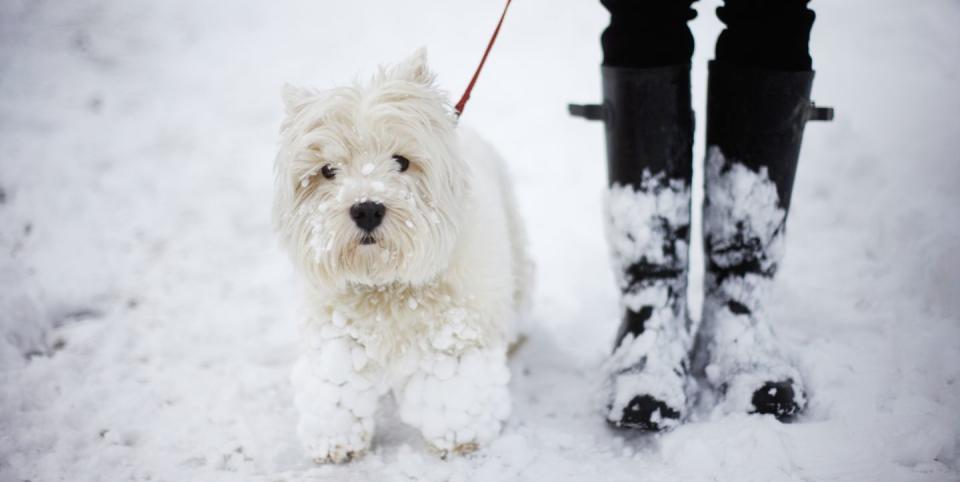When is it too cold to walk your dog? Experts reveal how to keep your pup safe this winter

Taking your dog for a daily walk is essential for their health and wellbeing, but it is important for dog owners to understand when it is too cold to take their pup out for a walk and how to best prepare them for cold temperatures.
Although your dog may look eager for some quality one-on-one time with their best friend (yes, that is you), it is important to look at the bigger picture.
Generally speaking, no dog should be taken out for a walk if the weather drops below -10°C, as they will be unable to withstand such cold temperatures. A good rule-of-thumb is that if it's uncomfortably cold for you as the owner, it's likely too cold for your dog, too.
Beyond that, more specific advice depends on the size of your dog.
According to data from the Tufts Animal Condition and Care (TACC) system, small and medium breed dogs will struggle to cope at -4°C and should be kept inside.
Once the temperature drops below zero degrees, small dogs should also be fitted with a sweater or coat to keep them warm. Additionally, their walks should also be limited to around 15 to 20 minutes to prevent them from getting too chilly.
Meanwhile, larger dogs are able to withstand slightly colder temperatures and longer walks. Due to their thicker coat, larger dogs should be able to walk for half an hour at -6 degrees.
You should also consider the breed of your dog. Speaking to The Metro, Dave Leicester from Vets Now, said: "Just like humans, some pets, such as husky dogs, are more tolerant to cold weather than others. Make sure you do your homework on your breed.
"For example, Dobermans, chihuahuas and great Danes require a little extra protection in the cold. Short-nosed pets are also more at risk from extreme temperatures due to inherited breathing difficulties."

PDSA vet Lynne James has also said that dog owners should avoid taking their pets out for a walk when it is raining or snowing during the winter months.
She said: "Watch out for wet weather – getting wet will increase the risk of your dog getting chilled. If you spot your pet shivering or they seem to be struggling with the cold, bring them into the warmth straight away.
"If your dog gets wet, always dry them off with a towel as soon as you get home and make sure to check and rinse their paws – any build-up of salt, grit, dirt or snow can be painful."
Lynne has also encouraged dog owners to embark on shorter, more regular, walks this winter. She said: "As the temperatures drop, plan for shorter, more frequent walks rather than one long distance hike daily.
"Despite the cold weather, dogs still need daily walks to keep them happy and healthy – it’s important for their mental, as well as physical health. Most dogs will cope well and many may even enjoy the cold!
"But, avoid forcing your pet to go outside if they really don’t want to on those bitterly cold days – let them go to the loo in the garden, and play some indoor activities instead."
Following this guidance will help prevent your dog from damaging their paws and developing hypothermia from the cold.
You Might Also Like

 Yahoo Finance
Yahoo Finance 